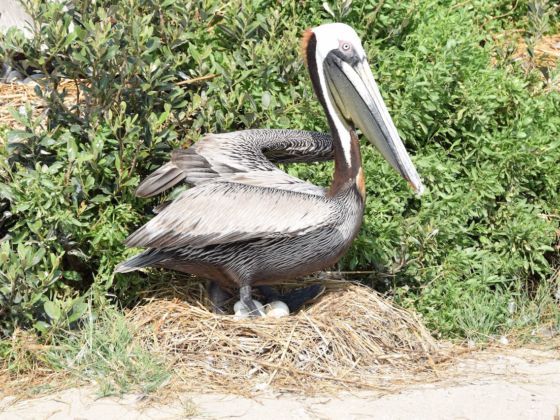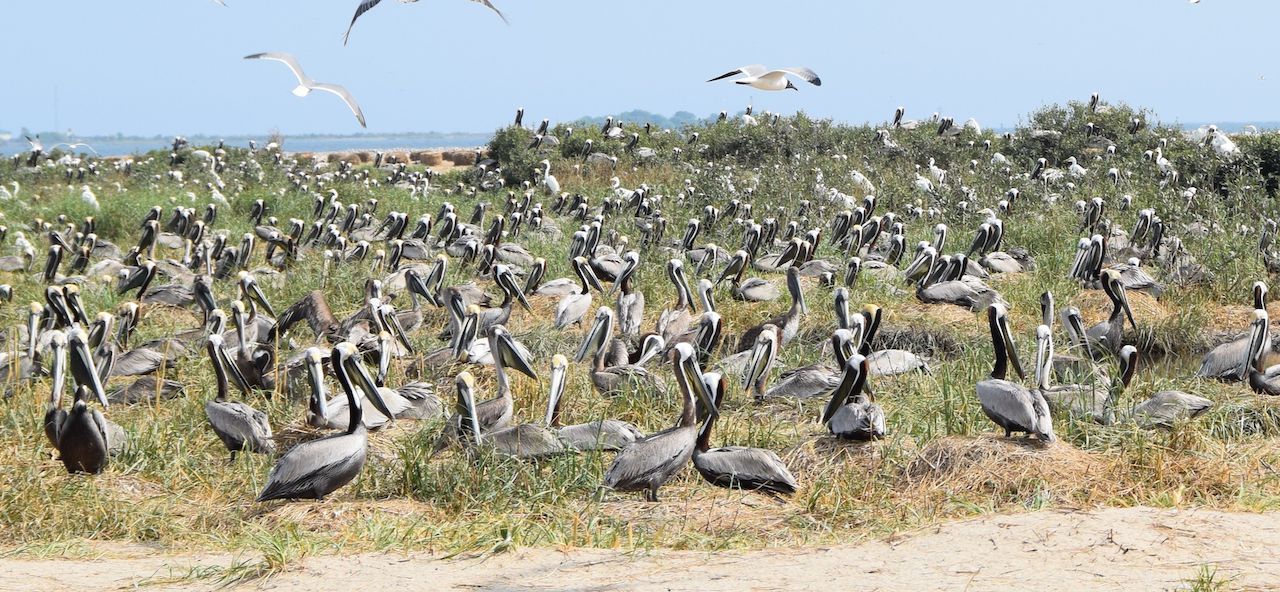Sometimes it’s nice to hear a little heartwarming news, and what’s more heartwarming than an island of baby pelicans?
This is actually better than heartwarming because the hatching of baby brown pelicans on Louisiana’s Queen Bess Island doesn’t just bring a smile to our collective faces because of their utter adorability. It also marks a huge milestone in the Coastal Protection and Restoration Authority’s two-and-a-half-year island restoration project, as these chicks are the first to hatch since its completion in February.
“This is one of the first projects we finished with our restoration funds,” says CPRA project manager Katie Freer. “The pelicans started arriving in late February, early March, right after we finished, and these are the first chicks born on the island after restoration.”


